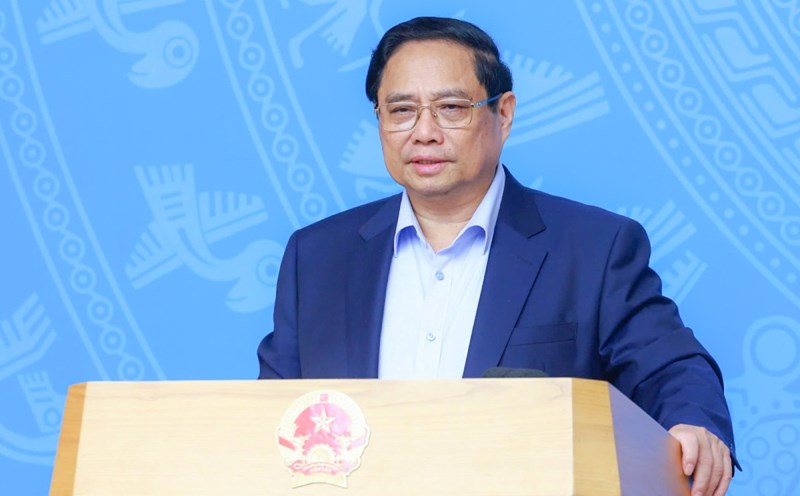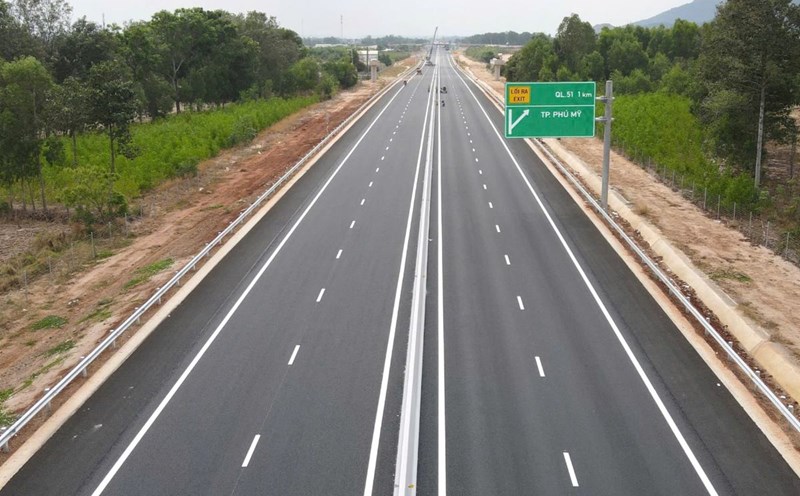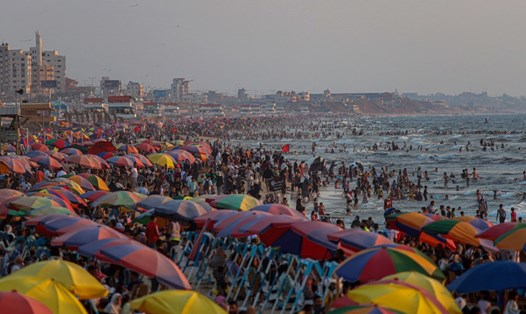Climate change makes natural disasters more unusual
At the seminar "Solutions of the Hydrometeorology sector in adapting to climate change" held on December 9, Lao Dong Newspaper had an interview with Dr. Hoang Duc Cuong, Deputy Director General of the General Department of Hydrometeorology (Ministry of Natural Resources and Environment) and Associate Professor, Dr. Pham Thi Thanh Nga, Director of the Institute of Hydrometeorology and Climate Change (Ministry of Natural Resources and Environment).
According to experts, the increase in strong storms as well as the irregularity of storm seasons are specifically linked to climate change.

During the discussion, Dr. Hoang Duc Cuong said that the number of strong and unusual storms has been increasing in recent decades. Specifically, globally, storms with intensity above level 15 (level 4 and 5) on the Saffir-Simpson scale have appeared more frequently in the past 40 years; The average maximum wind intensity of storms also tends to increase.
In addition, more and more storms are rapidly intensifying, increasing by 4-5 levels within 24 hours. This rapid intensification is especially dangerous because it reduces the time for warning and preparation.
Not only are storms getting stronger, they are also staying strong for longer periods of time. This trend is particularly evident in the Northwest Pacific, where storms can stay strong longer than in the past, according to Dr. Hoang Duc Cuong.
"Increased and longer storm rainfall is also a typical example of climate change. Due to increased atmospheric moisture and warmer global temperatures, storms produce more rain, leading to increased risk of flooding. Furthermore, research shows that storms move more slowly when making landfall, causing prolonged rainfall and impacting flooding in affected areas," said Dr. Hoang Duc Cuong.
According to Dr. Hoang Duc Cuong, not only in the world, but also in Vietnam, climate change and abnormal manifestations of natural disasters have been and are taking place. The number of storms stronger than level 12 in the East Sea also tends to increase slightly.
Storm No. 3 Yagi in 2024 is a typical example, this storm is considered a super storm in the East Sea with rapid intensification, strong winds, long storm duration, high intensity storm rain and widespread impact, almost the entire North is affected.

According to Associate Professor, Dr. Pham Thi Thanh Nga, Director of the Institute of Meteorology, Hydrology and Climate Change (Ministry of Natural Resources and Environment), climate change with the trend of global warming (both atmospheric and sea surface temperature) has been affecting the conditions for the formation and development of storms in all oceans. This has been shown in the length of the storm season, frequency of activity, maximum intensity that can be achieved, rainfall, rate of change in intensity and trajectory of movement, and survival after storms make landfall.
Meteorological industry maintains its "pioneering" goal
Faced with the impacts of climate change, the world and Vietnamese hydrometeorology industry has specific goals and solutions.
In 2024, the World Meteorological Organization launched World Meteorological Day with the theme "Meteorology and hydrology take the lead in responding to climate change". According to Dr. Hoang Duc Cuong, Responding to climate change is a series of actions for the climate, in which early warning of natural disasters is the first and most important step. And implementing these early warnings is part of the functions and tasks of the hydrometeorology sector.
During the discussion, Dr. Hoang Duc Cuong also affirmed that hydrometeorology plays a pioneering, extremely important and indispensable role in responding to climate change and implementing sustainable development goals.
"Meteorology and hydrology not only provide information to support climate change mitigation activities, but more importantly, to deploy an early warning system. This is a key issue in adaptation and disaster risk reduction, towards a safer and better world," said Dr. Hoang Duc Cuong.
According to Associate Professor Dr. Pham Thi Thanh Nga, in Vietnam, the Ministry of Natural Resources and Environment has actively and proactively implemented climate change scenarios. Since the first climate change and sea level rise scenario was announced in 2009, Vietnam has updated the scenario three times in 2012, 2016, and 2020.
According to the Law on Hydrometeorology, every 5 years, climate change scenarios need to be updated; the Institute is currently developing the 2025 version of the scenario, expected to be released at the end of 2025.
Based on the actual situation of climate change, the 2025 scenario has some highlights such as: Updated method according to IPCC AR6 based on the SSP Socio-Economic Sharing scenario (instead of RCP as in 2020); High-resolution grid monitoring data; Combining high-resolution multi-model simulations of future climate for Vietnam; Detailed scenarios to urban scale and providing more detailed information for models assessing the impact of climate change on economic sectors; Building scenarios according to global warming thresholds; Focusing on building extreme scenarios such as: Storms, droughts, heat waves...; Coordinating with international agencies, sharing simulation data and organizing international workshops to serve the building of climate change scenarios for Vietnam.

"To effectively apply climate change scenarios, close coordination between all levels of government, communities and people is needed, along with the support of modern scientific and technological tools. The implementation of adaptation, mitigation and awareness raising measures are important factors to ensure sustainability in responding to climate change in Vietnam," said Ms. Nga.
Talking about the development goals of the hydrometeorological sector, Dr. Hoang Duc Cuong said that by 2030, the Meteorological sector aims to reach the advanced level of science and technology in Asia and have the capacity to provide complete, reliable and timely hydrometeorological information and data to meet the requirements of socio-economic development, natural disaster prevention, climate change adaptation, and national defense and security.
At the same time, the Meteorological industry also aims to form and develop a market for hydrometeorological services and technology to serve multiple purposes and multiple fields.
By 2030, the meteorological sector will increase the total number of automatic monitoring stations across the network to 95% for meteorological stations, water level measurement stations, rain measurement stations, high-altitude wind measurement stations and at least 40% for water flow measurement stations. In addition, the meteorological sector is also researching the application of remote monitoring technology using satellites, cameras, remote sensing, Internet of Things (IoT), artificial intelligence (AI) in monitoring activities to serve large-scale monitoring and forecasting.











